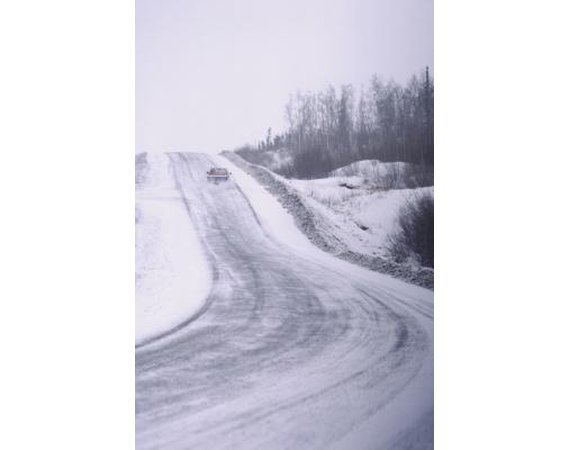
Winters in areas with icy roads are hard on car bodies. Road crews apply copious amounts of salt to the streets to create safer driving conditions when snow and ice are a concern. Understanding the damage caused by road salt to your vehicle's paint job can also help you learn to prevent it.
Salt Damage
Salt attacks the paint on your car in more than one way. Most modern cars are protected by a clear coat on top of the paint job. Salt eats away at that clear layer and leaves the paint underneath vulnerable to a variety of external damaging factors. Salt also speeds up the rusting process. If the body panels of your car are made of metal, the salt will eventually cause those panels to rust. Rust behind a paint job can cause paint to crack, and eventually holes may appear in the body work.
Avoid Garages
Although you might think that parking in your garage helps melt any ice buildup containing salt off your car, this actually causes the damage to accelerate. This makes any ice turn into water, which increases the odds that the salt is going to cause damage to your paint job. If it is below freezing outside, it is better to leave your car out until you can wash the ice and salt off the car.
Washing
The more often you wash your car in the winter, the more you prevent damage from the salt on the roads. Optimally, wash your car at least every 10 days to prevent salt damage. If that is not an option due to ongoing cold temperatures, definitely take advantage of days when the temperature gets above freezing and wash your car when the opportunity presents itself.
Before Winter
If you're prepared for winter, you can mitigate the damage caused by road salts to your vehicle. When you know winter is coming, take your car into the car wash and wash it as completely as you can. Clean the undercarriage of the vehicle as best you can too. When you're done, wax and seal the car. This all helps prevent the salt from actually penetrating to the vulnerable layers of your car.
0 comments:
Post a Comment